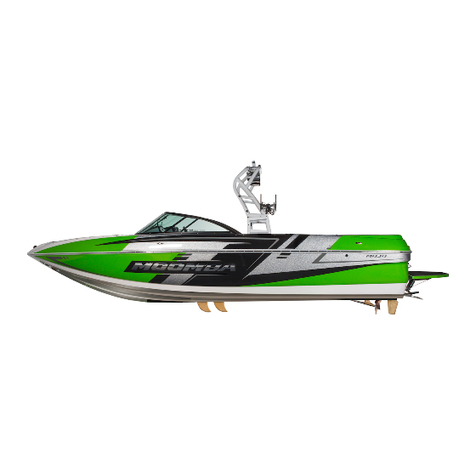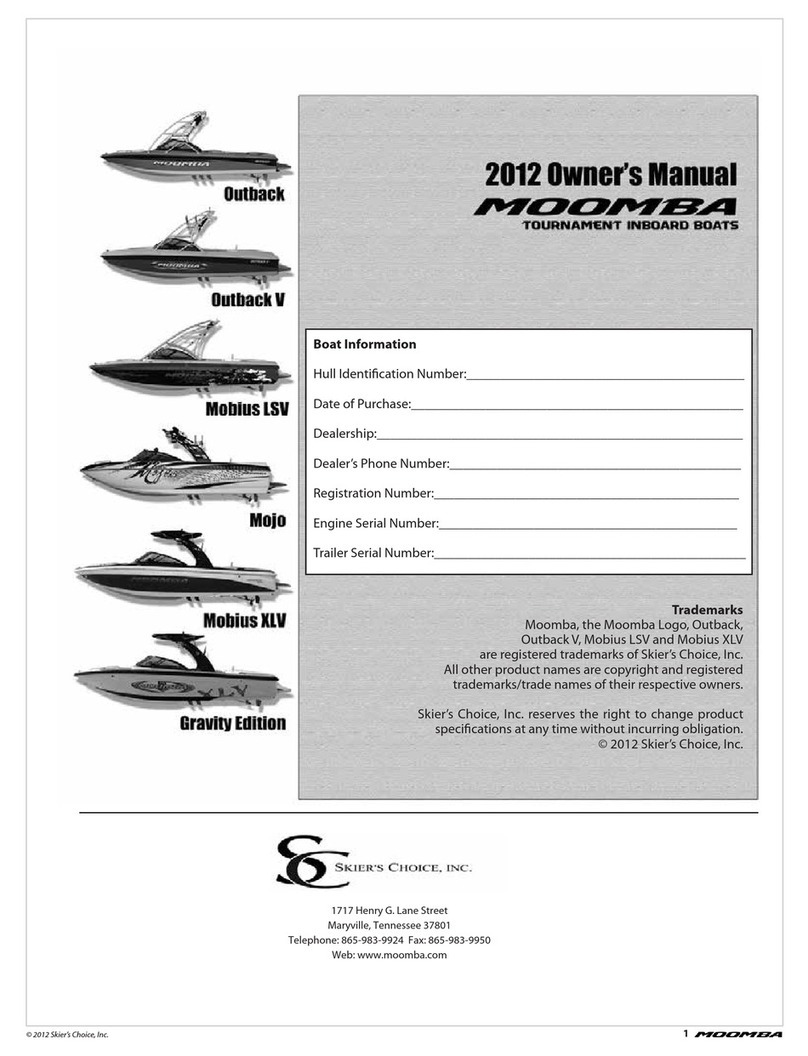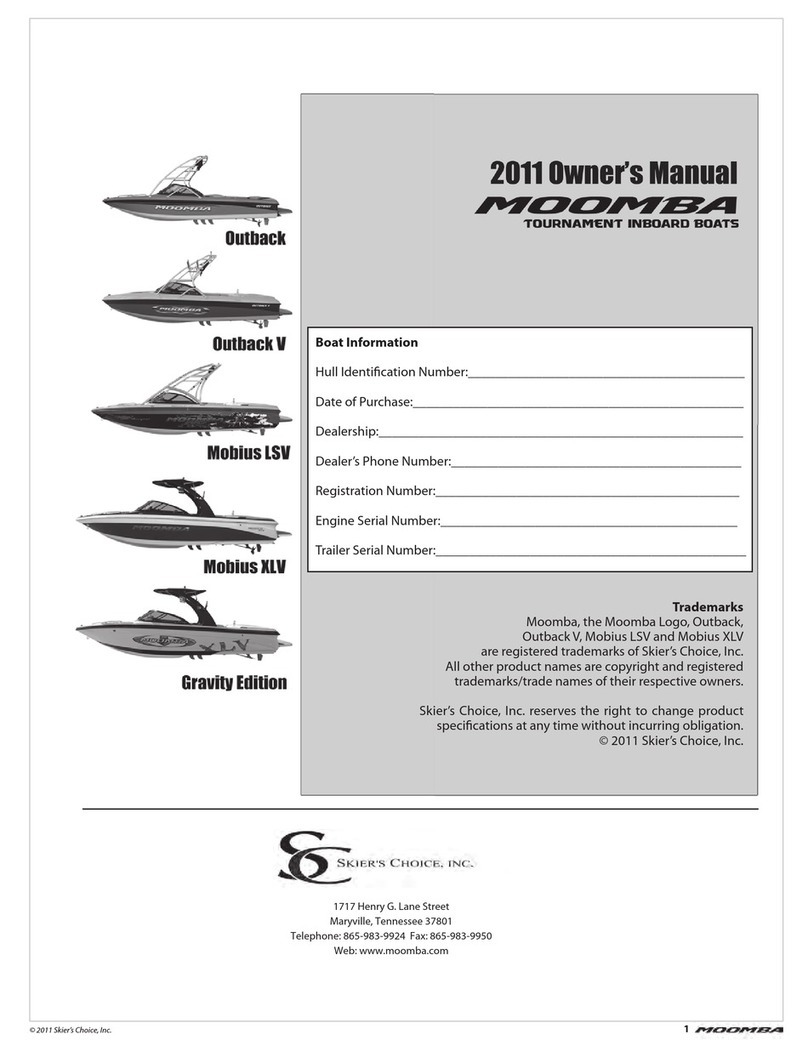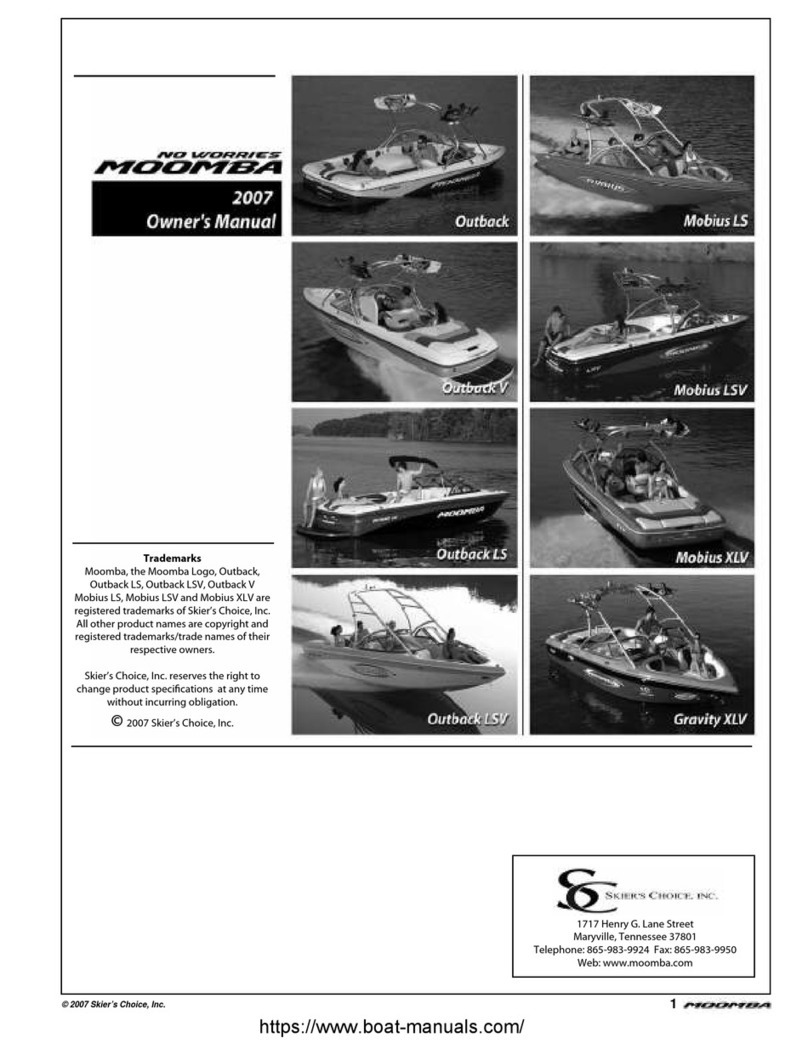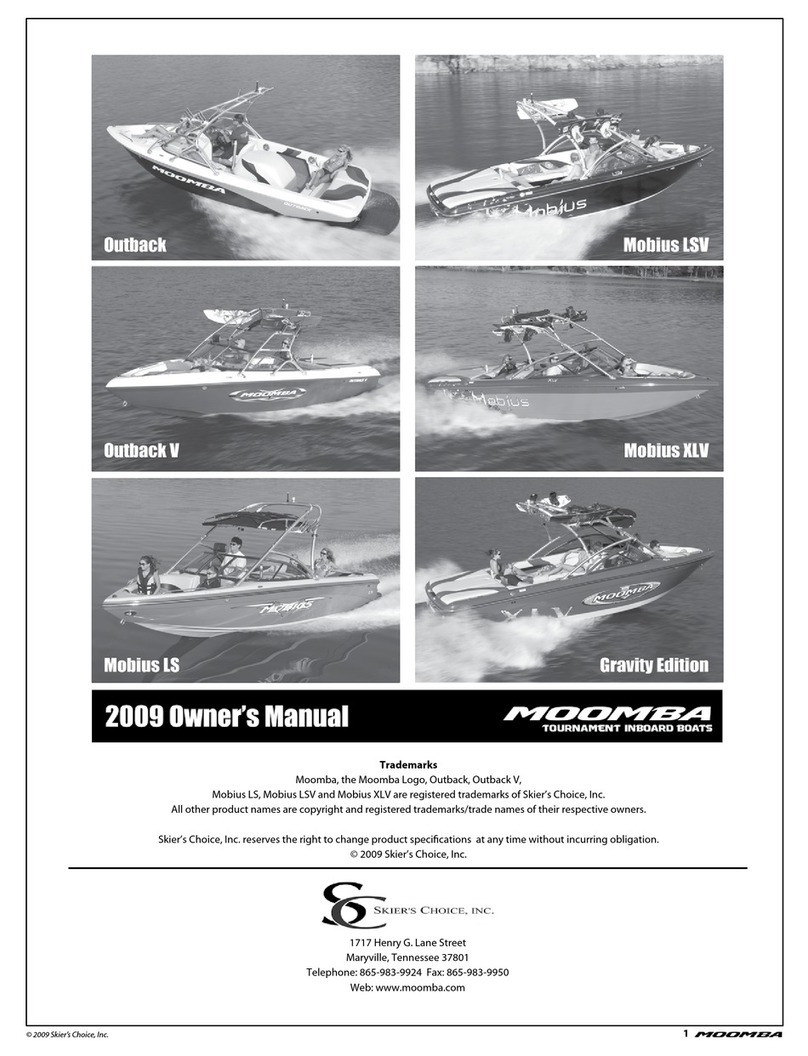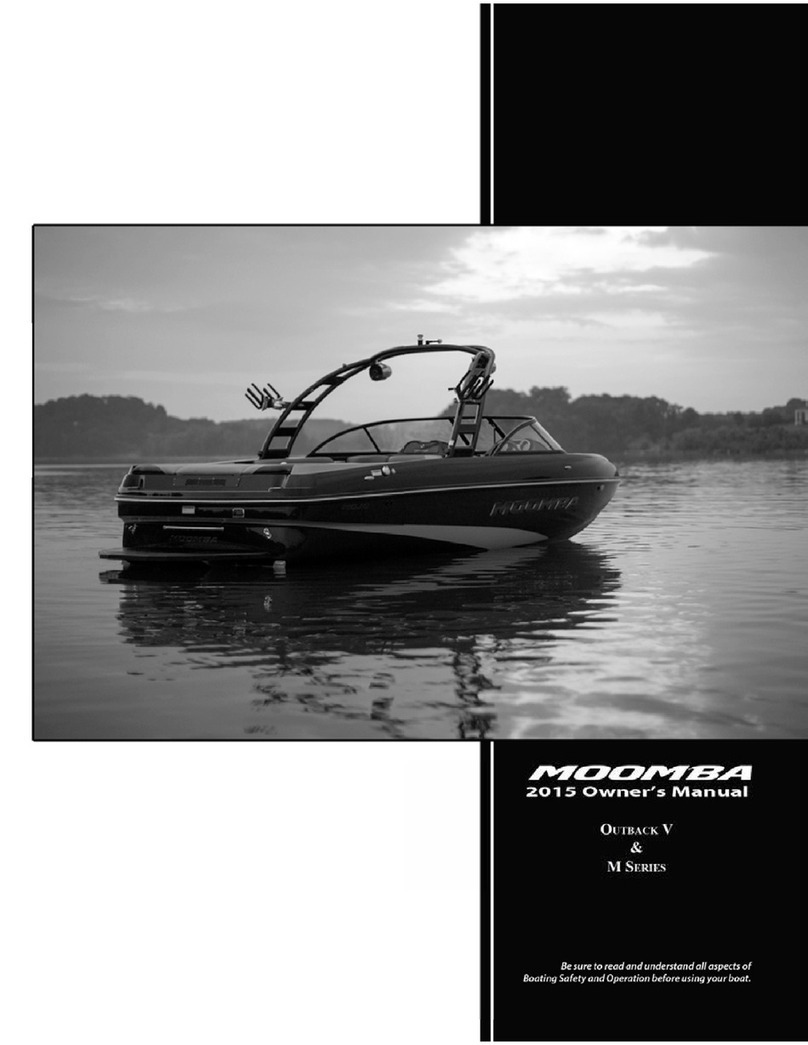
6© 2003 Skier’s Choice, Inc.
Safety Equipment
Your Moomba has been equipped at the factory with most
ofthefederally required safetyequipment for inland waters
(Class 1, 16’-to-26’). This equipment includes:
- UL-approvedMarineFireExtinguisher,TypeA-BC(2lbs.),
good for solids, liquids, and electrical fire
- ABYC-approved Marine Mufflers with water injection
- USCG-approved Marine FlameArrestor
- USCG-approvedEngine Box Ventilationwith spark-less
power blower
- ABYC-approved Electric Horn sound warning device
- USCG-approvedinland lighting
FederallawalsorequiresatleastoneTypeI,IIorIIIPersonal
Flotation Device (PFD) for each person on board or being
towed on water skis or other recreational equipment. In
addition,onethrowableTypeIVPFD must also beon board.
As the owner, obtaining the appropriate PFDs is your
responsibility. YourMoombadealer can—andwillbehappy
toassist you.
NOTE: Requirements for coastal waters and inland
waters differ. Check with the local authorities for more
information.
Asmart owner willavoid potential problemson anouting by
having additional equipment on board. Normally, this
equipmentisdependent on thebody of waterand thelength
of the trip.
We suggest the following—as a minimum. Your Moomba
dealercanalsoassistyouwith additional recommendations.
- An anchor with at least 75-feet of line
- A manual bailing device for removing water
- A combination oar/boat hook
- Aday-and-nightvisual distress signal
- A first aid kit and manual
- An airway breathing tube
- Awaterproof flashlight
- Aset of local navigation charts
- Mooringlines and fenders
- Extraengine oil
- A tool kit
- AportableAM/FM radio or weather radio
Boating-related accidents are generally caused by the
operator’s failure to follow basic safety rules or written
precautions. Mostaccidentscan beavoided ifthe operator
is completely familiar with the boat, its operation, and can
recognizepotentially hazardoussituationsbeforeanaccident
occurs.
Failure to adhere to these precautions may result
in severe injury or death to you and/or others.
- Improperoperation is extremelydangerous. Operators
mustreadandunderstandall operating manualssupplied
with the boat before operation.
- On-board equipment must always conform to the
governingfederal, state, andlocal regulations.
- Children in the bow of the boat should be
accompanied by an adult at all times.
- Never stand or allow passengers to stand while the boat
is moving. You or others may be thrown from the boat.
- Neveroperatetheboatwhileunder theinfluenceofalcohol
or other drugs.
- Gasoline vapors can explode. Before starting engine,
openenginebox,checkengine compartmentforgasoline
vapors, and operate blower for at least 4 minutes. Run
blowerbelow cruising speed.
- Leakingfuelisafire andexplosionhazard. Inspectsystem
regularly. Examine fuel tanks for leaks or corrosion at
leastannually.
- Neveroverrideormodifythe engine safety shut-offswitch
or engine neutral starting safety switch in any way.
- Never remove or modify components of the fuel system
inanywayexceptformaintenancebyqualifiedpersonnel.
Tamperingwith fuel componentsmaycause a hazardous
condition.
- Never allow any type of spark or open flame on board. It
may result in fire or explosion.
- It is the owner’s responsibility to check tightness of the
Rad-A-Cage Tower bolts BEFORE each use.
- The Rad-A-CageTower is designed to pull a single (1)
individual. DONOTclimbor sit on theRad-A-CageTower.
Rope may loop on inverted tricks. DO NOT sit behind
the pulling point of the Rad-A-Cage Tower.
General Safety Precautions
- To avoid serious personal injury, DO NOT be on or about
theswim platform whileengine isrunning and keepaway
from rear of boat while engine is running.
- Toavoid serious personalinjury,DO NOT operate engine
while anyone is on or about the swim platform or in the
water near the boat.







